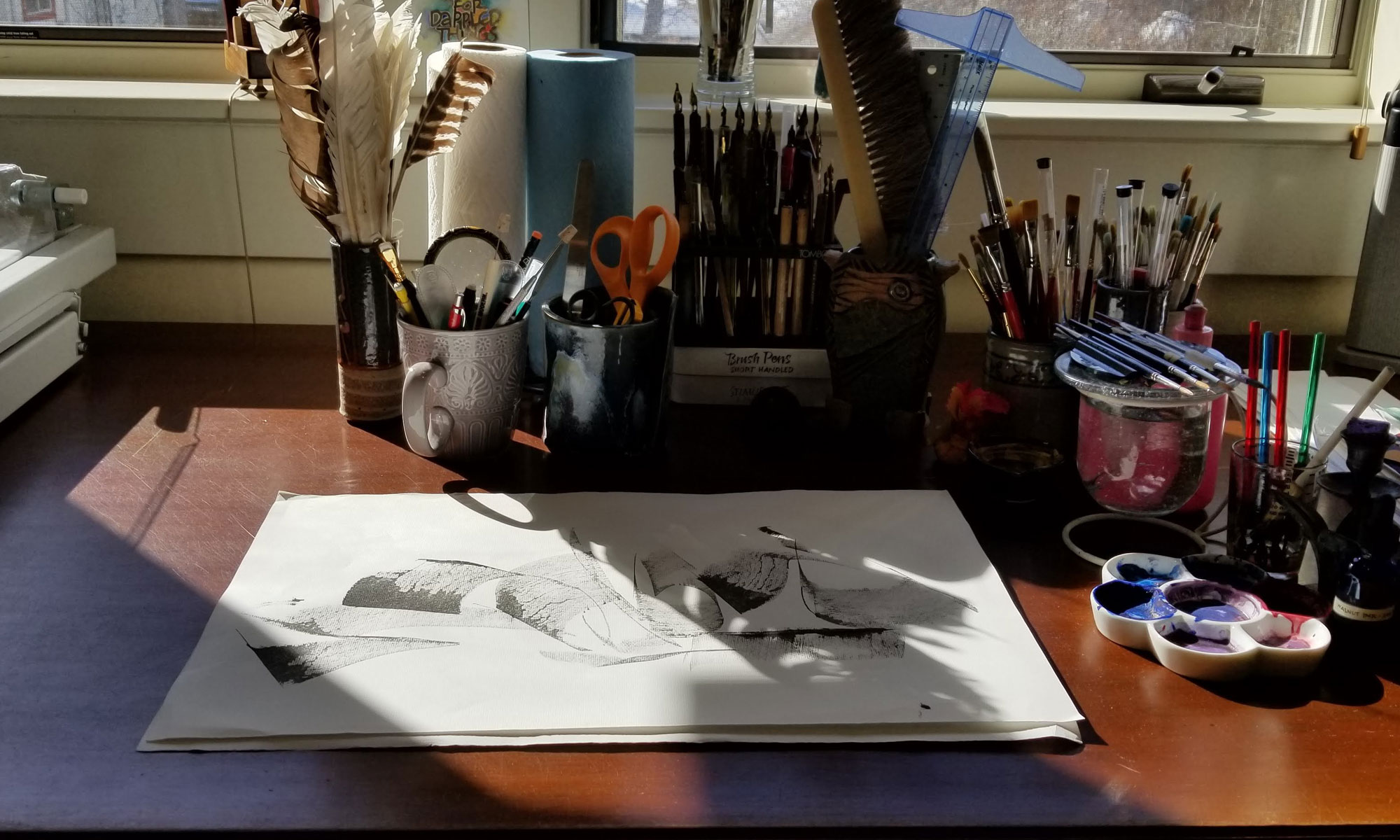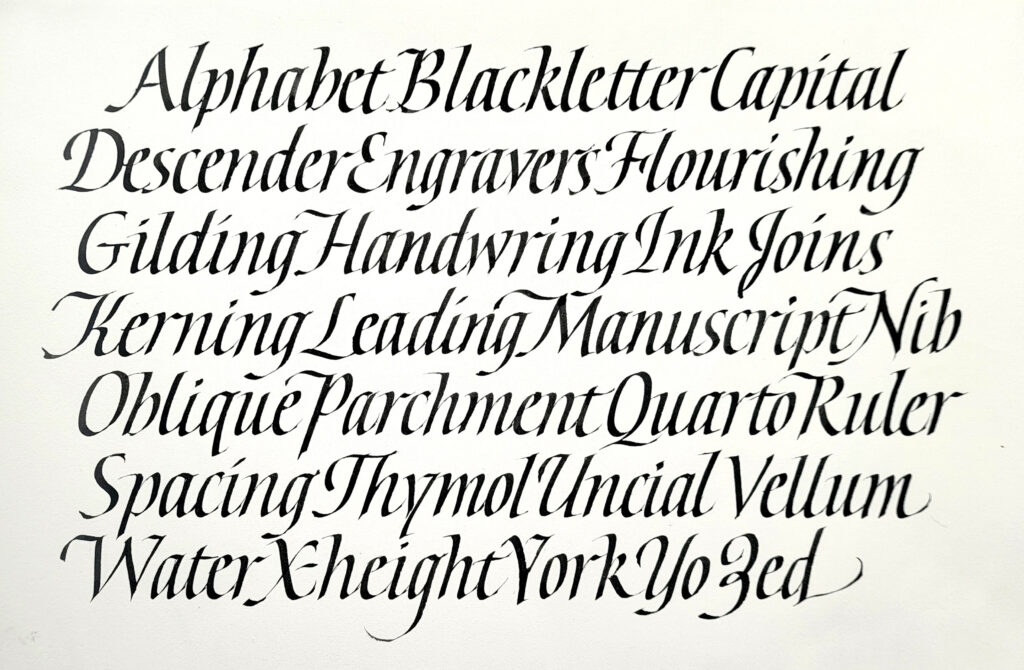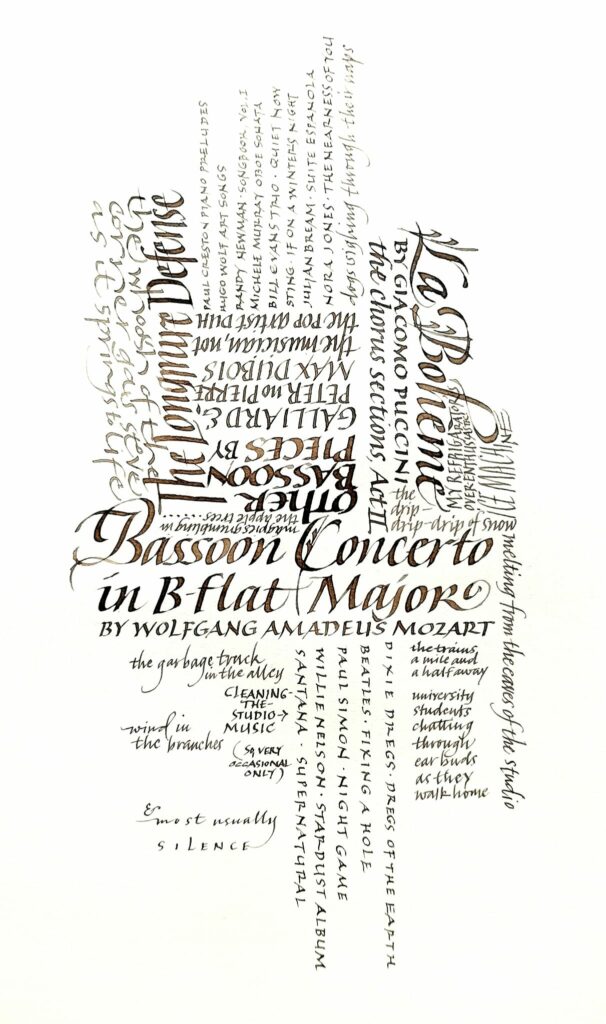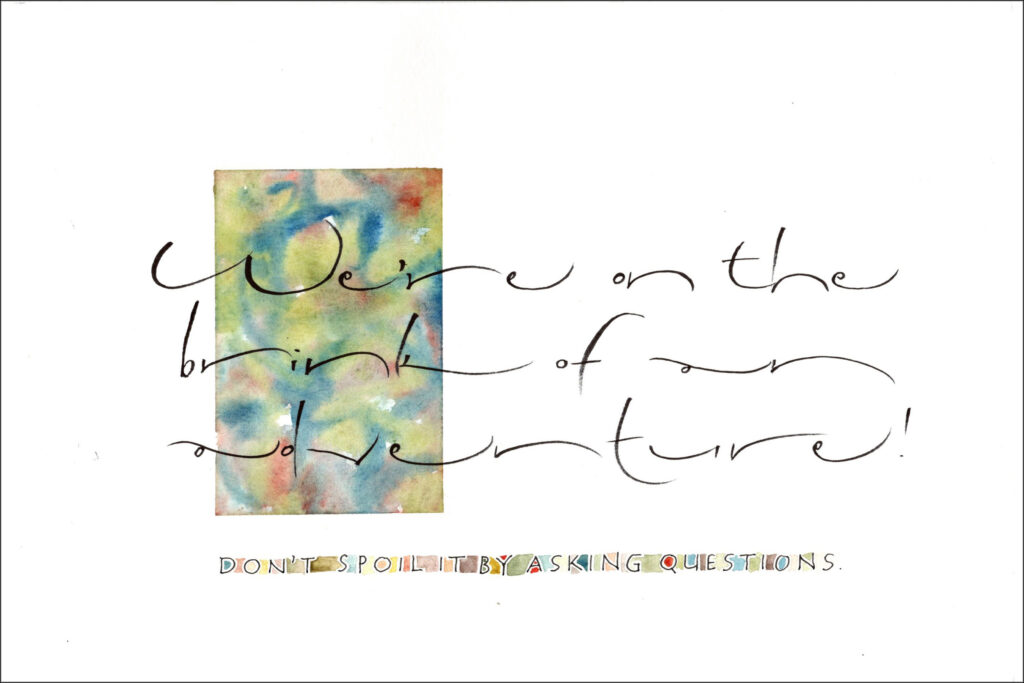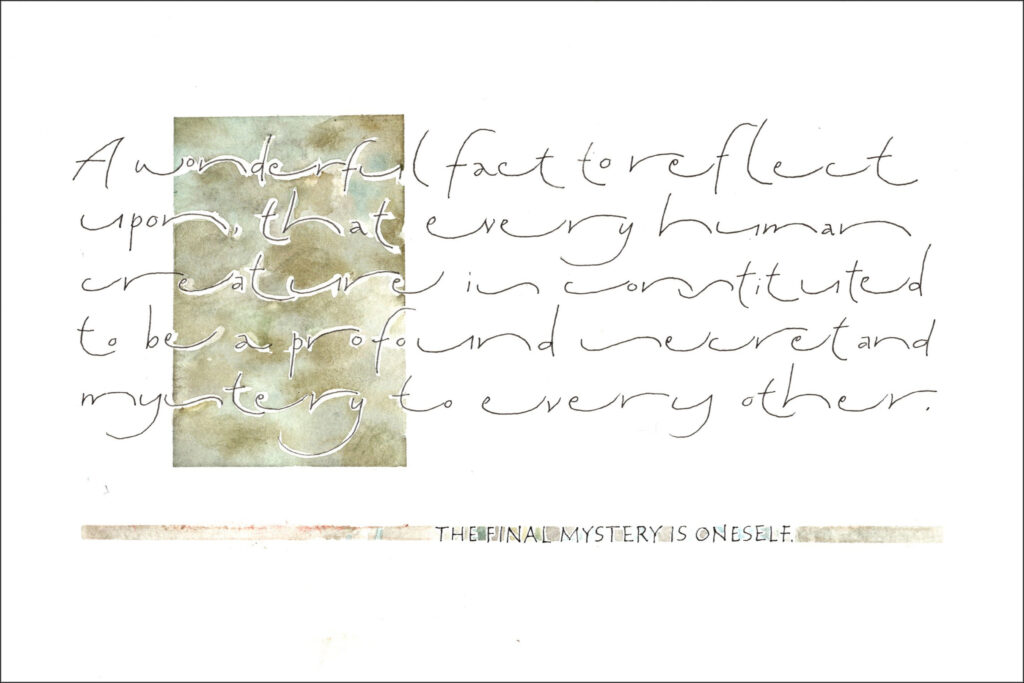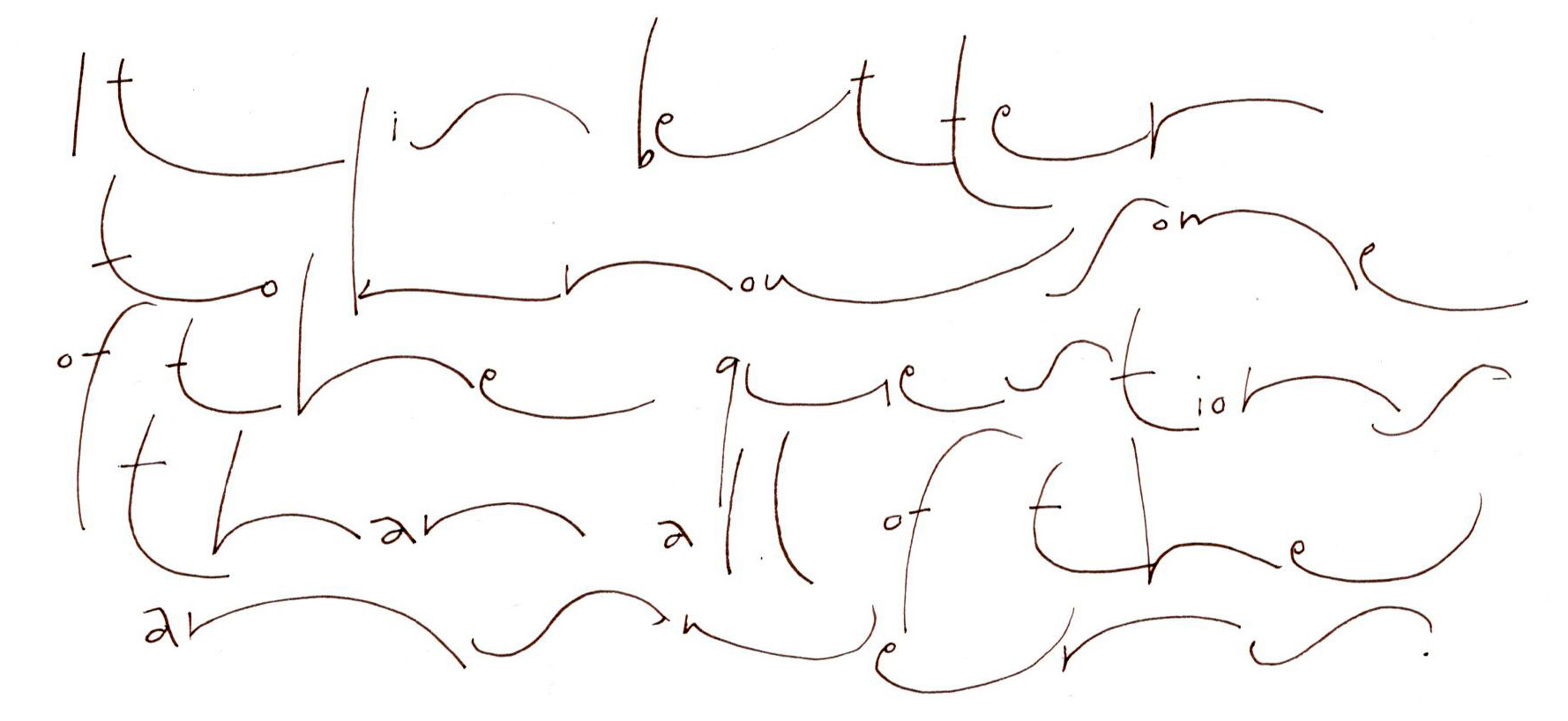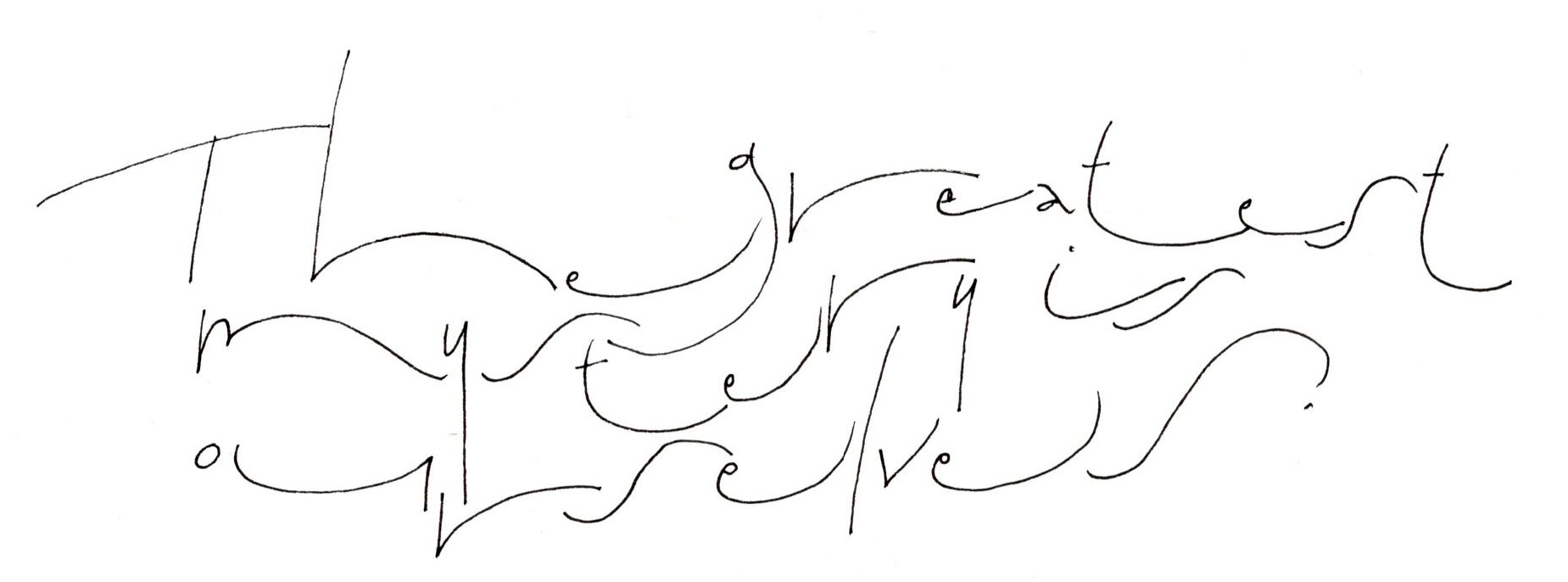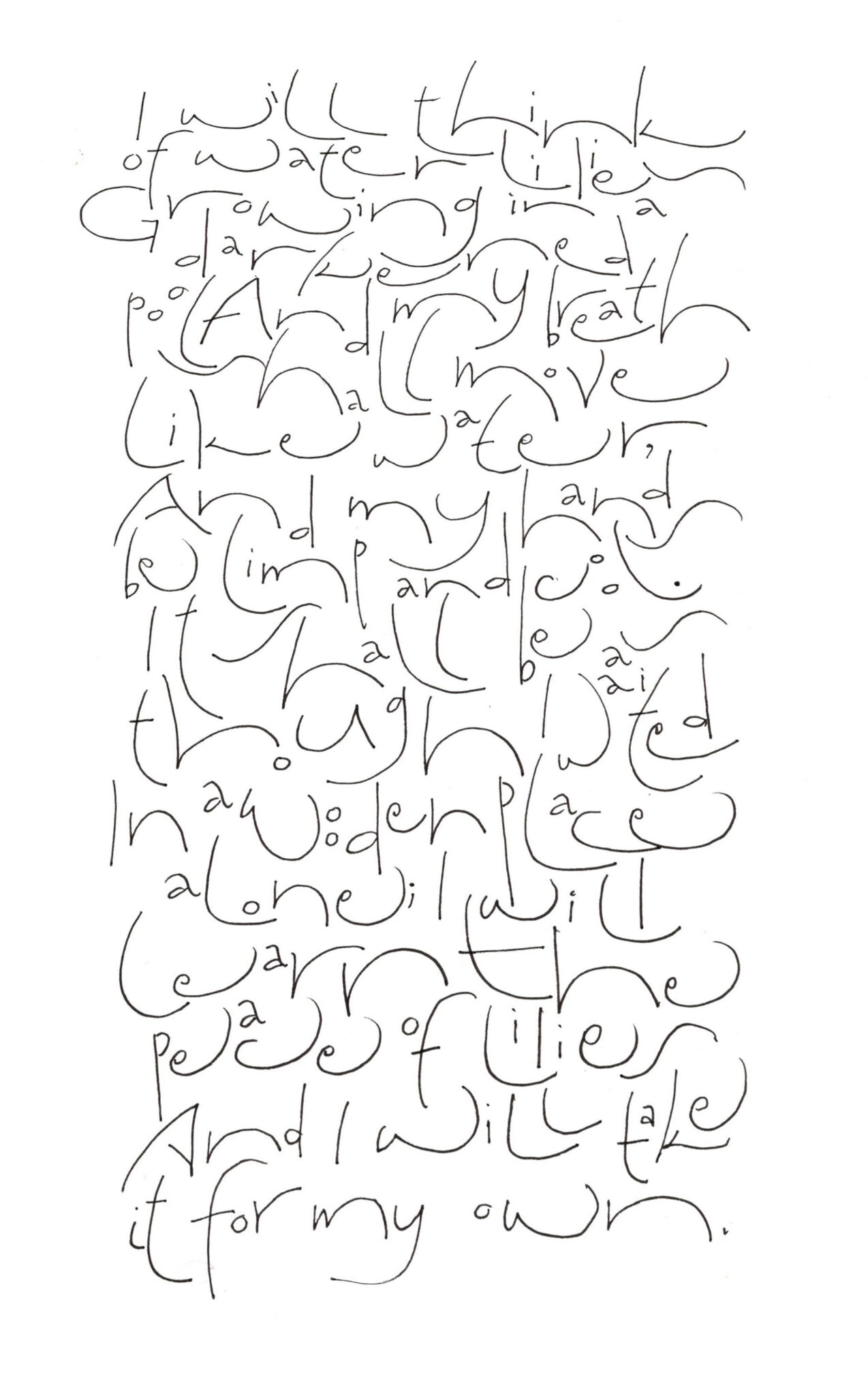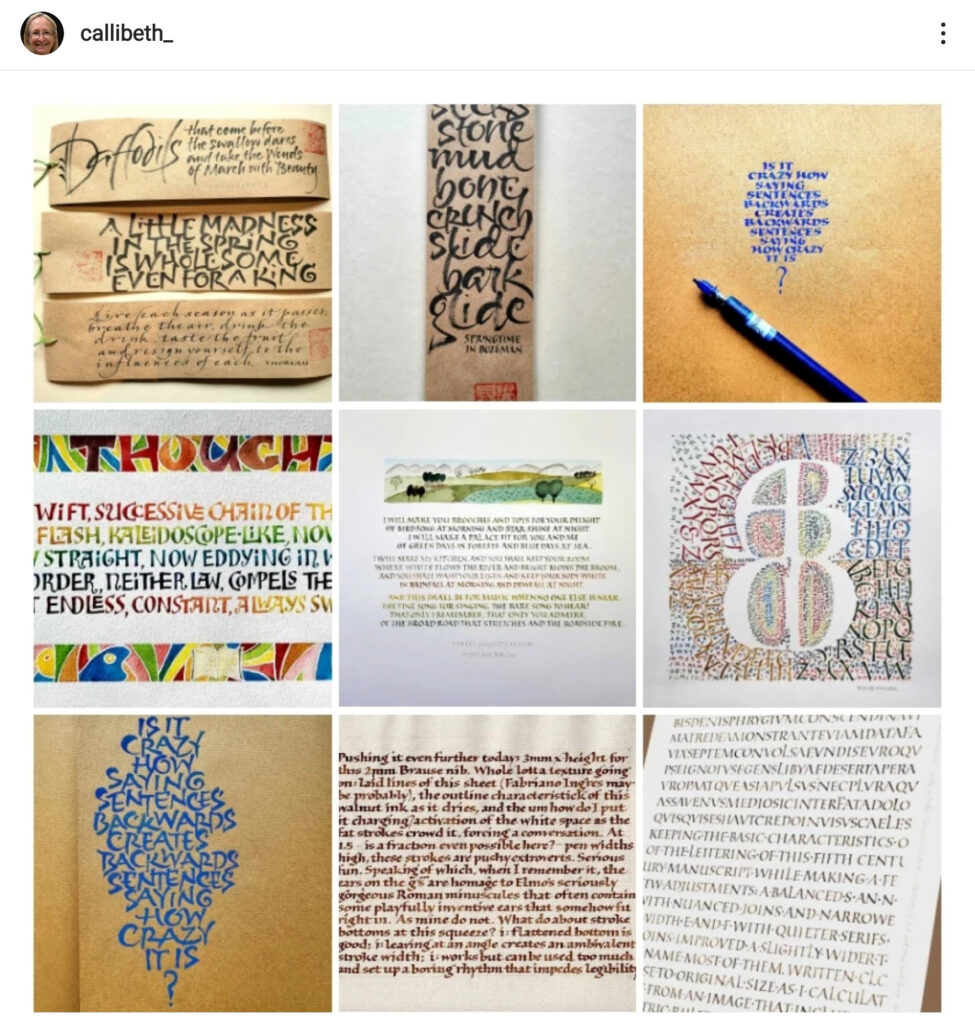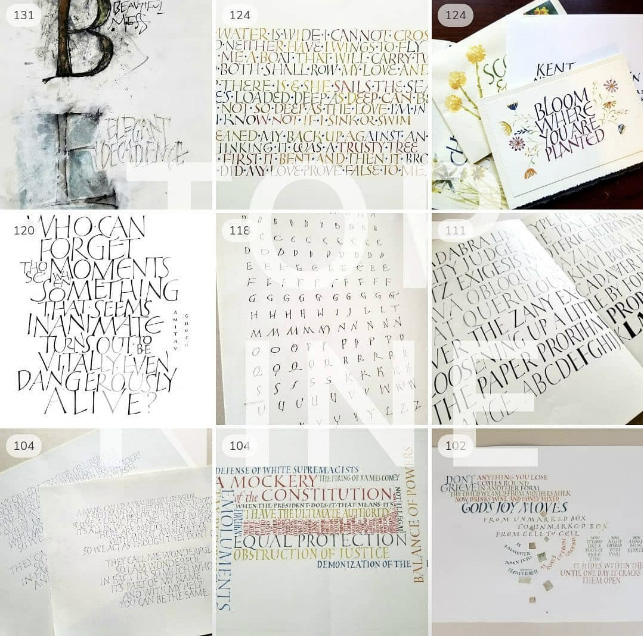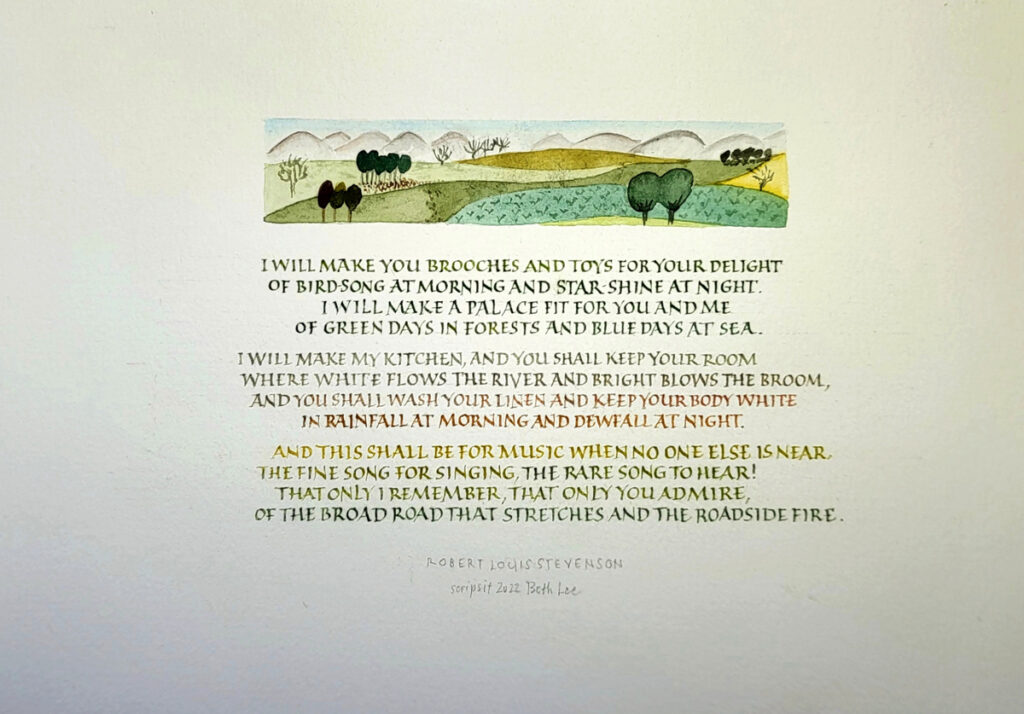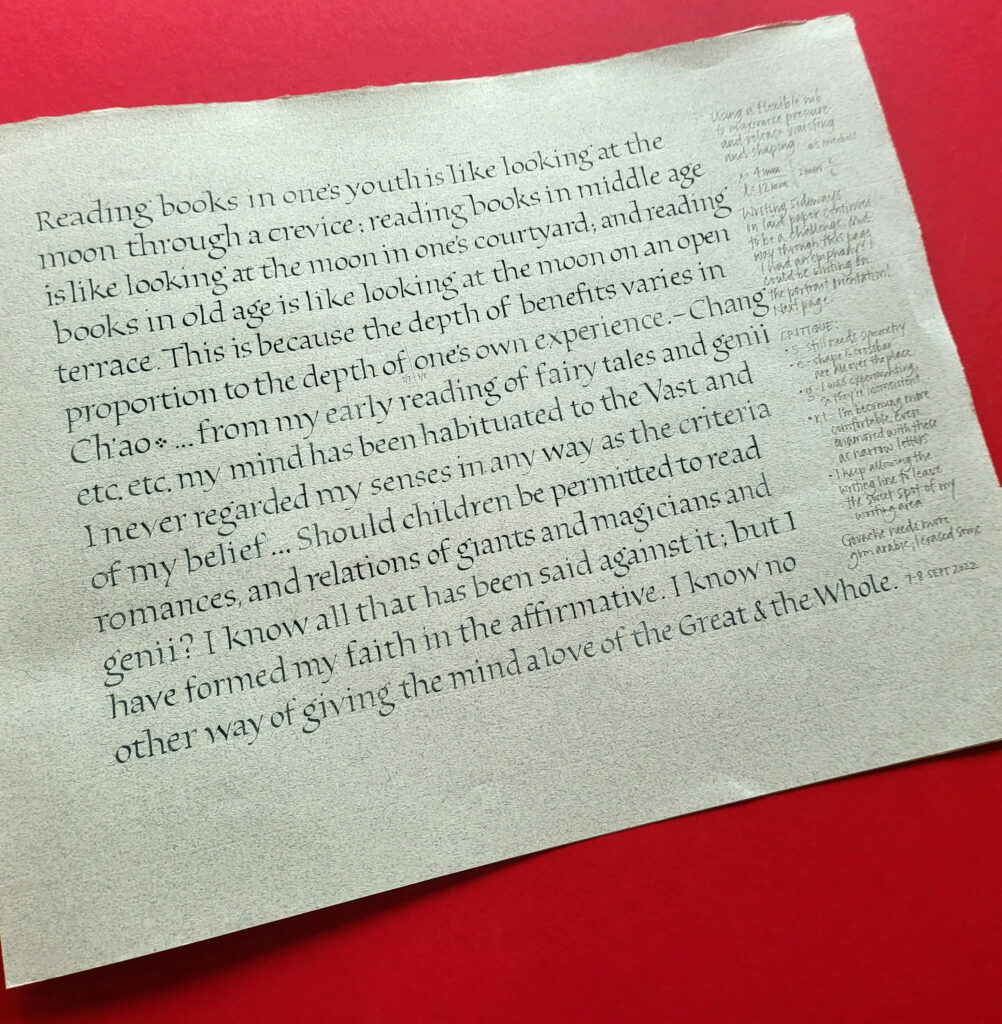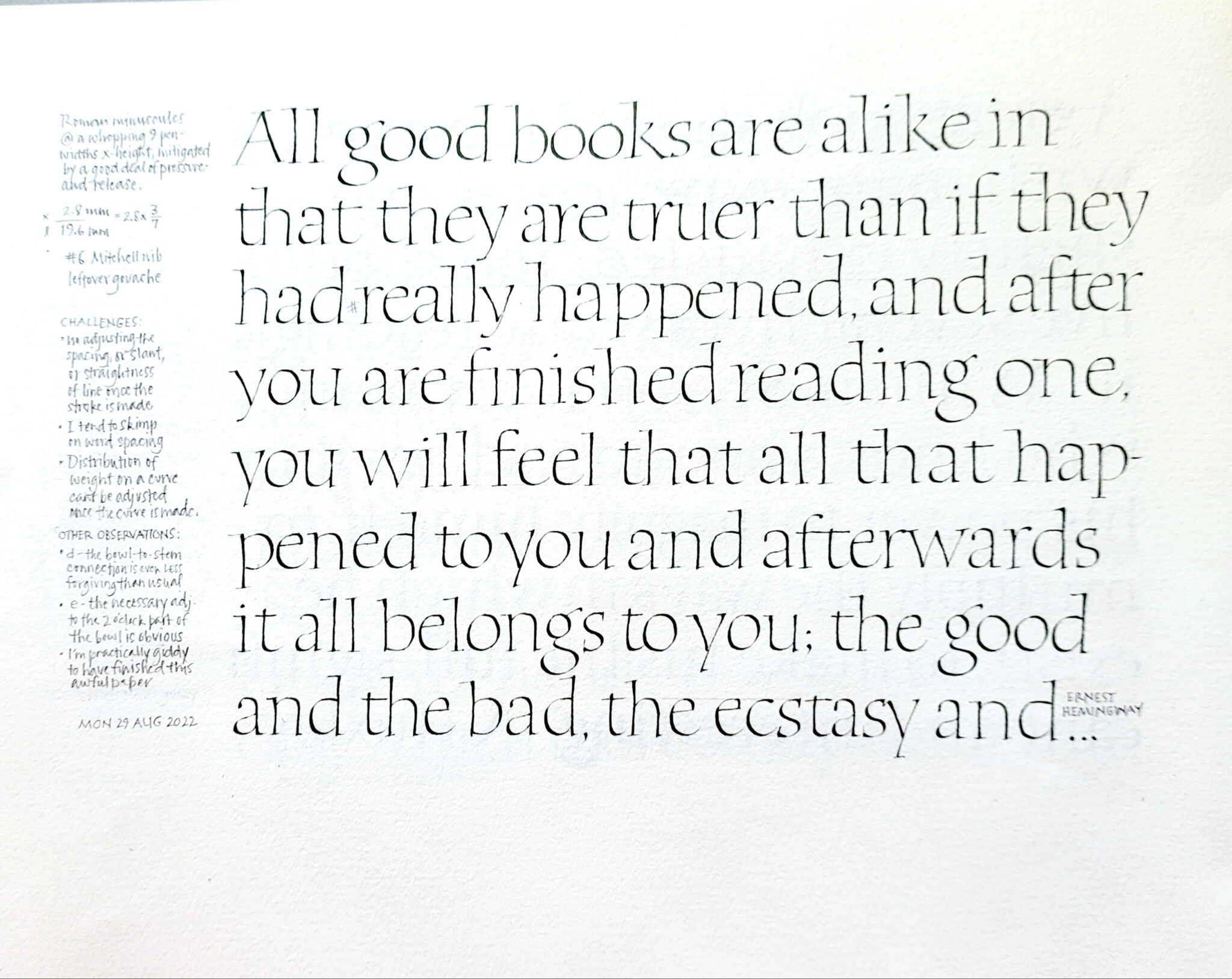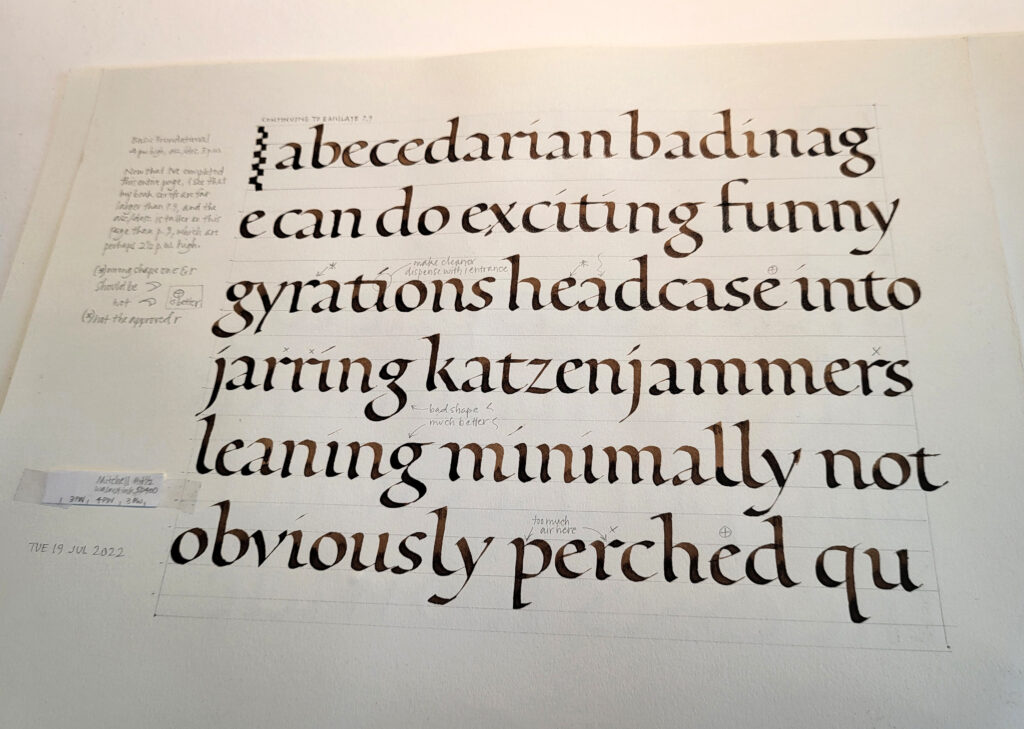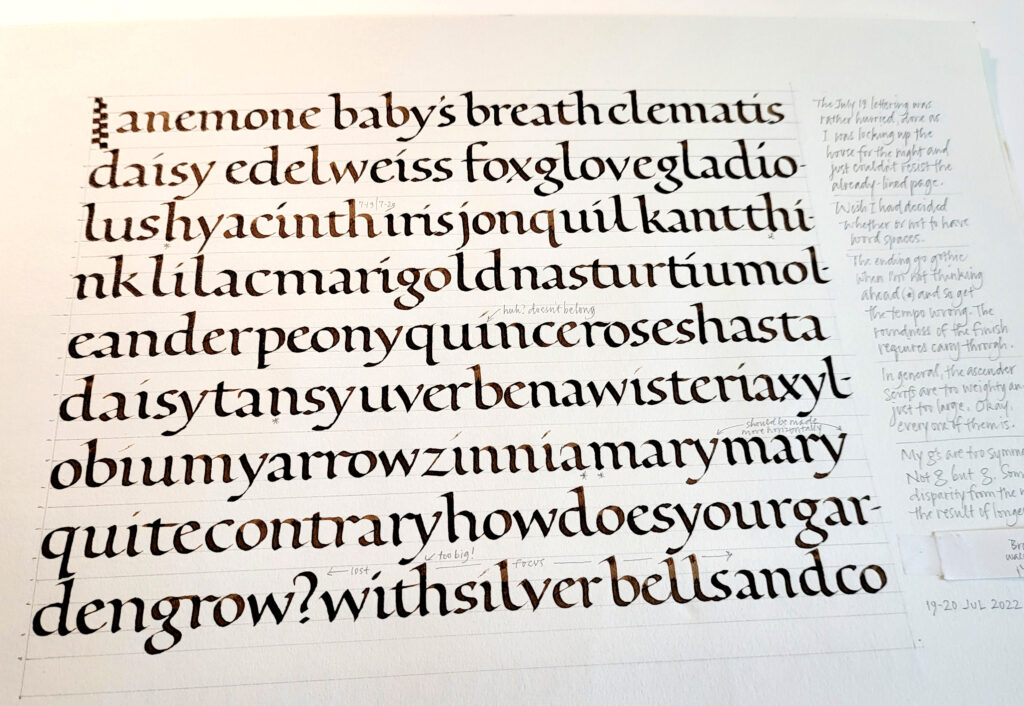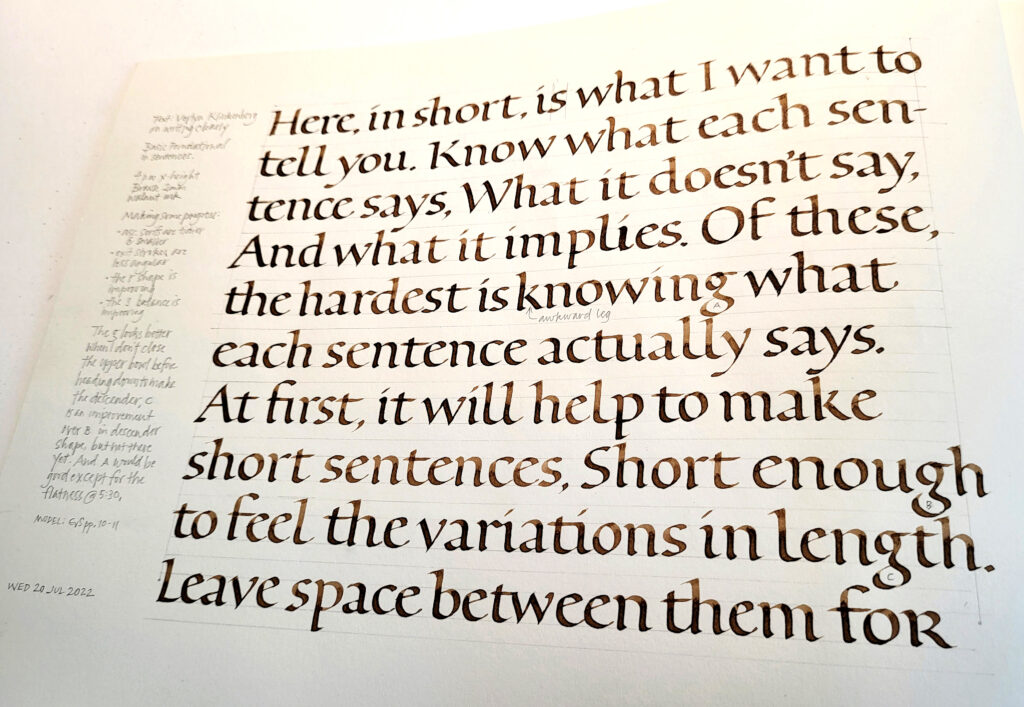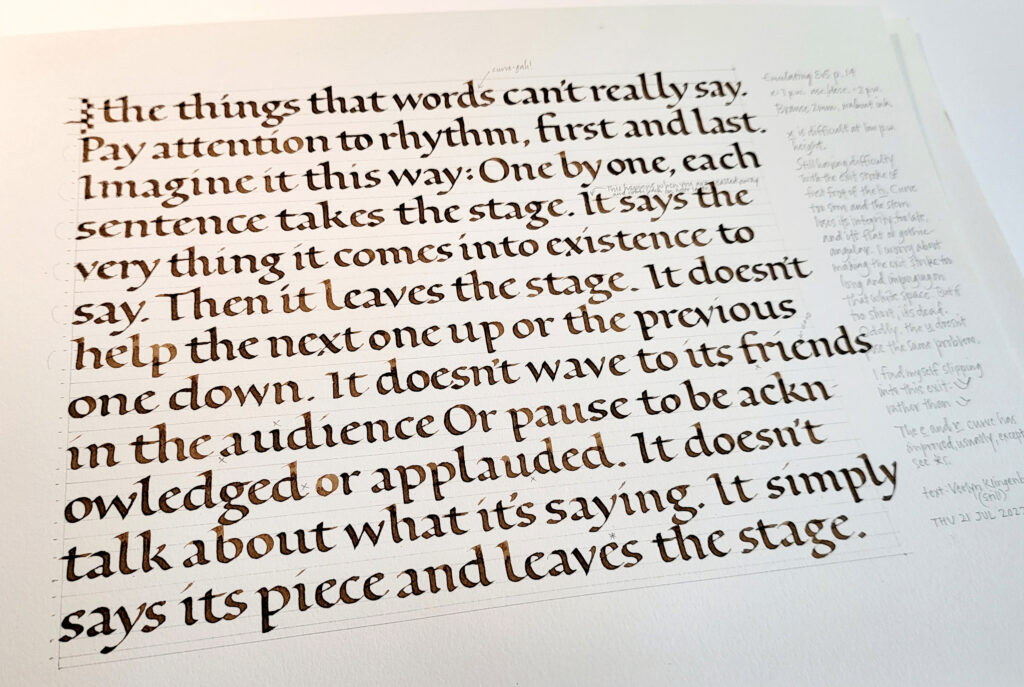Our week-long class at the international calligraphy conference at St. Ambrose University with John Stevens was simply wonderful. My main frustration was that there was so much else to do at the conference that I didn’t get enough time to work in the classroom. Every full day that I’ve been home since then, I’ve been doing three pages of brush Romans. That’s two pages of Trajans and one page of whatever else I want to do. Even though the letters aren’t improving much, I think that my eye is seeing more.
One of the really valuable lessons from John was about how to condition our flat brushes to get them to work at their optimum level. Between July 1 and 21, I was interested to see that, after daily brush conditioning at the end of each session, my Winsor & Newton 995 is now substantially wider than when I started.
All these 18″ x 30″ (mostly) sheets cuts from a roll of butcher paper have reached a certain critical mass: they no longer can be contained by the three binder clips I’ve been using to hang them. So I’ve rolled them up and put them in the corner, but I don’t have a lot of extra space for these. They’ll be seeing the recycling bin before long.
I’m looking forward to creating a new batch of higher-class recycling 🙂
